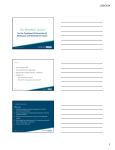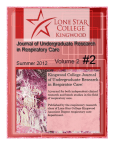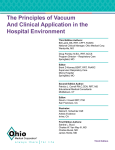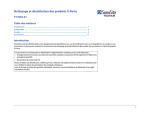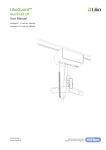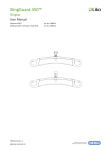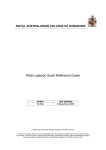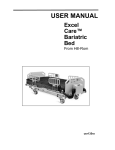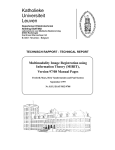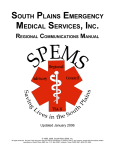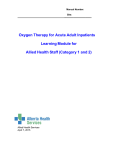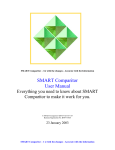Download USER MANUAL - Nibert Consulting
Transcript
USER MANUAL The MetaNeb® System From Hill-Rom Product No. PMN3 162902 REV 2 PROPRIETARY AND CONFIDENTIAL DRAFT 01-DEC-10 © 2010 by Hill-Rom Services, Inc. ALL RIGHTS RESERVED. Manufactured by: HILL-ROM SERVICES PRIVATE LIMITED 1 YISHUN AVENUE 7 SINGAPORE 768923 No part of this text shall be reproduced or transmitted in any form or by any means, electronic or mechanical, including photocopying, recording, or by any information or retrieval system without written permission from Hill-Rom Services, Inc. (Hill-Rom). The information in this manual is confidential and may not be disclosed to third parties without the prior written consent of Hill-Rom. Second Edition, December 2010 First Printing 2010 3M™ is a registered trademark of Minnesota Mining and Manufacturing Company. Disptach® is a registered trademark of The Clorox Company. Hill-Rom® is a registered trademark of Hill-Rom Services, Inc. MetaNeb® is a registered trademark of Comedica, Inc. MetaTherapy® is a registered trademark of Comedica, Inc. Oxivir® is a registered trademark of Diversey, Inc. Viraguard® is a registered trademark of Veridien Corp. Virex® is a registered trademark of Diversey, Inc. Wex-Cide™ is a trademark of Wexford Labs, Inc. The MetaNeb® System User Manual (162902 REV 2) i PROPRIETARY AND CONFIDENTIAL DRAFT 01-DEC-10 The information contained in this manual is subject to change without notice. Hill-Rom makes no commitment to update or keep current, the information contained in this manual. Hill-Rom reserves the right to make changes without notice in design, specifications, and models. The only warranty Hill-Rom makes is the express written warranty extended on the sale or rental of its products. To order additional copies of this manual (162902), refer to the back cover for contact information. For countries not listed on the back cover, contact your distributor. NOTE: The back cover is a comprehensive list of Technical Support contact information for Hill-Rom. The product discussed in this manual may not be available in all of the countries listed. ii The MetaNeb® System User Manual (162902 REV 2) PROPRIETARY AND CONFIDENTIAL DRAFT 01-DEC-10 Table of Contents Document Symbols . . . . . . . . . . . . . . . . . . . . . . . . . . . . . . . . . . . . 1 Indications . . . . . . . . . . . . . . . . . . . . . . . . . . . . . . . . . . . . . . . . . . . 2 Absolute Contraindications . . . . . . . . . . . . . . . . . . . . . . . . . . 2 Relative Contraindications . . . . . . . . . . . . . . . . . . . . . . . . . . . 2 Possible Adverse Reactions . . . . . . . . . . . . . . . . . . . . . . . . . . 2 Precautions . . . . . . . . . . . . . . . . . . . . . . . . . . . . . . . . . . . . . . . 3 Introduction . . . . . . . . . . . . . . . . . . . . . . . . . . . . . . . . . . . . . . . . . . 4 Description . . . . . . . . . . . . . . . . . . . . . . . . . . . . . . . . . . . . . . . 4 Theory Of Operation . . . . . . . . . . . . . . . . . . . . . . . . . . . . . . . 4 Features . . . . . . . . . . . . . . . . . . . . . . . . . . . . . . . . . . . . . . . . . . . . . 7 Controller . . . . . . . . . . . . . . . . . . . . . . . . . . . . . . . . . . . . . . . . 7 Circuit . . . . . . . . . . . . . . . . . . . . . . . . . . . . . . . . . . . . . . . . . . . 8 Assemble The Controller System . . . . . . . . . . . . . . . . . . . . . . . . . 9 Assemble The Circuit . . . . . . . . . . . . . . . . . . . . . . . . . . . . . . . . . 10 Normal Configuration . . . . . . . . . . . . . . . . . . . . . . . . . . . . . 10 Mask Configuration . . . . . . . . . . . . . . . . . . . . . . . . . . . . . . . 10 Move The Stand . . . . . . . . . . . . . . . . . . . . . . . . . . . . . . . . . . . . . . 11 MetaTherapy® Treatment Protocol . . . . . . . . . . . . . . . . . . . . . . . 12 Frequency . . . . . . . . . . . . . . . . . . . . . . . . . . . . . . . . . . . . . . . 12 Procedure . . . . . . . . . . . . . . . . . . . . . . . . . . . . . . . . . . . . . . . 12 Assessment Of Outcome . . . . . . . . . . . . . . . . . . . . . . . . . . . 13 Re-evaluation . . . . . . . . . . . . . . . . . . . . . . . . . . . . . . . . . . . . 13 The MetaNeb® System In-line With Ventilator Protocol . . . . . . 14 Frequency . . . . . . . . . . . . . . . . . . . . . . . . . . . . . . . . . . . . . . . 14 Procedure . . . . . . . . . . . . . . . . . . . . . . . . . . . . . . . . . . . . . . . 14 Assessment Of Outcome . . . . . . . . . . . . . . . . . . . . . . . . . . . 15 Re-evaluation . . . . . . . . . . . . . . . . . . . . . . . . . . . . . . . . . . . . 15 Clean And Disinfect . . . . . . . . . . . . . . . . . . . . . . . . . . . . . . . . . . 16 Clean . . . . . . . . . . . . . . . . . . . . . . . . . . . . . . . . . . . . . . . . . . . 17 Steam Clean . . . . . . . . . . . . . . . . . . . . . . . . . . . . . . . . . . . . . 17 Clean Difficult Spots . . . . . . . . . . . . . . . . . . . . . . . . . . . . . . 17 The MetaNeb® System User Manual (162902 REV 2) iii PROPRIETARY AND CONFIDENTIAL DRAFT 01-DEC-10 Disinfect . . . . . . . . . . . . . . . . . . . . . . . . . . . . . . . . . . . . . . . . 17 Function Check . . . . . . . . . . . . . . . . . . . . . . . . . . . . . . . . . . . . . . 18 Troubleshooting And Maintenance . . . . . . . . . . . . . . . . . . . . . . . 19 Troubleshooting . . . . . . . . . . . . . . . . . . . . . . . . . . . . . . . . . . 19 Maintenance . . . . . . . . . . . . . . . . . . . . . . . . . . . . . . . . . . . . . 19 Shipping And Packaging . . . . . . . . . . . . . . . . . . . . . . . . . . . 20 Product Symbols . . . . . . . . . . . . . . . . . . . . . . . . . . . . . . . . . . . . . 21 Specifications . . . . . . . . . . . . . . . . . . . . . . . . . . . . . . . . . . . . . . . . 22 Classification And Standards . . . . . . . . . . . . . . . . . . . . . . . . 24 Circuit Part Numbers . . . . . . . . . . . . . . . . . . . . . . . . . . . . . . . . . . 25 iv The MetaNeb® System User Manual (162902 REV 2) PROPRIETARY AND CONFIDENTIAL DRAFT 01-DEC-10 Document Symbols This manual contains different typefaces and symbols to make the content easier to read and understand: • Standard text—used for regular data. • Boldface text—emphasizes a word or phrase. • NOTE:—sets apart special data or important instruction clarification. • WARNING or CAUTION – A WARNING identifies situations or actions that may have an effect on patient or user safety. To ignore a warning could cause patient or user injury. – A CAUTION identifies special procedures or precautions that persons must obey to help prevent equipment damage. The MetaNeb® System User Manual (162902 REV 2) 1 PROPRIETARY AND CONFIDENTIAL DRAFT 01-DEC-10 INDICATIONS The MetaNeb® System is indicated for mobilization of secretions, lung expansion therapy, the treatment and prevention of pulmonary atelectasis, and also has the ability to provide supplemental oxygen when used with compressed oxygen. Patients who may benefit from The MetaNeb® System would include those with one or more of these disease states: • Bronchiolitis • Cystic Fibrosis • Asthma • Chronic Bronchitis • Bronchiectasis • Neuromuscular Disorders • Emphysema • Chronic Obstructive Pulmonary Disease (COPD) • Patients who need Post Operative Airway Management • Patients who need Emergency Room Airway Management Absolute Contraindications • Untreated tension pneumothorax • Untrained or unskilled operator Relative Contraindications • History of pneumothorax • Pulmonary air leak • Recent pneumonectomy • Pulmonary hemorrhage • Myocardial infarction • Vomiting Possible Adverse Reactions • Hyperventilation • Gastric distension • Decreased cardiac output 2 The MetaNeb® System User Manual (162902 REV 2) PROPRIETARY AND CONFIDENTIAL DRAFT 01-DEC-10 • Increased intracranial pressure • Increased air trapping • Hyperoxygenation • Pneumothorax • Pulmonary air leak • Pulmonary hemorrhage Precautions • Federal law restricts this device to sale by or on the order of a physician. • Circuits are for single patient use only. • Do not occlude entrainment orifices. • Do not use on uncooperative patients. • Read the User Manual before use. • Use only with the supplied nebulizer. • To be used only by individuals familiar with its use. • Failure to discard the circuit in accordance with facility protocol could cause patient injury due to cross-contamination. • Patients that may have difficulty clearing secretions from the upper airway (such as those with DMD or other advanced neuromuscular or neurological disorders) may require specialized therapy regimens that involve manually or mechanically assisted coughing or other techniques in conjunction with The MetaNeb® System. Please consult your physician to determine if additional therapy is appropriate. • Use only with hospital grade 50 psi oxygen sources that meet local, state, and goverment regulations. The MetaNeb® System User Manual (162902 REV 2) 3 PROPRIETARY AND CONFIDENTIAL DRAFT 01-DEC-10 INTRODUCTION The MetaNeb® System provides a protocol for therapy that will enhance secretion removal, and prevent or resolve patchy atelectasis. Description The MetaNeb® System is a therapeutic device that uses a systematic approach to enhance normal mucus clearance and resolve or prevent patchy atelectasis. The system has three modes: • Aerosol—for the delivery of aerosol only. In this mode CHFO and CPEP are not available. • CHFO (Continuous High Frequency Oscillation)—a pneumatic form of chest physiotherapy that delivers medicated aerosol while oscillating the airways with continuous pulses of positive pressure. • CPEP (Continuous Positive Expiratory Pressure)—provides medicated aerosol combined with continuous positive pressure to assist in holding open and expanding the airways. The MetaNeb® System provides a platform from which both CHFO and CPEP can be administered contiguously. This composite therapy is referred to as "MetaTherapy® Treatment". Theory of Operation Normal Mucus Clearance Normal mucus clearance in the lungs is accomplished in three unique ways. It must be understood that these mechanisms complement each other and none are mutually exclusive. The three mechanisms are: 1. Mucociliary Escalator 2. Cough 3. Autocephalad Flow Mucociliary Escalator The respiratory tract consists of approximately twenty-four generations, each lined with a mucus secretion consisting of two layers. The top layer is a hydrated gel layer. The bottom layer is a thin, less viscous sol layer. Cilia line the entire surface of the respiratory tract down to the terminal bronchiole (16th generation). These cilia beat continuously at a rate of approximately 10-20 times per second and propel mucus in a 4 The MetaNeb® System User Manual (162902 REV 2) PROPRIETARY AND CONFIDENTIAL DRAFT 01-DEC-10 cephalad fashion 1-3 mm per second. The mucus with any entrapped particles is swallowed or coughed to the atmosphere. Cough A cough can be voluntary or stimulated as part of a reflex and is an effective way to remove even large quantities of secretions from the upper airways (6th-7th generations). This is accomplished by creating high velocity flow rates at high lung volumes through the generation of intrapleural pressures >100 mmHg, then releasing this pressure explosively to the atmosphere. Air can be expelled in excess of 100 miles per hour. These high airflows create shear forces, which in turn, cause mucus to be expelled. Past the 6th generation, airways begin to lose their cartilaginous support, and at the high pressures the small airways tend to collapse, thereby preventing secretion removal. Thus, the rationale behind the HUFF cough and FET maneuvers is that by teaching patients to cough at lower lung volumes, high pressures are minimized and small airway collapse is reduced. Autocephalad Flow When gas flows over a thickly lined mucus layer, a shear force directly proportional to the velocity of the gas is produced. If this airflow velocity is maintained and exceeds the cohesive forces of the mucus, the mucus will move in the direction of the gas flow. Essentially, autocephalad flow is comparable to a cough, except that lower gas velocities are generally present. To further understand, it is helpful to examine normal tidal breathing. During normal inspiration the diaphragm contracts and is displaced caudally. Concomitantly, the intercostal muscles contract to lift the ribs. These actions together increase the anterior-posterior dimension (volume) of the thoracic cavity resulting in a decrease in alveolar pressure as compared to atmospheric. This pressure gradient results in a flow of gas into the lungs. It is important to understand that as the pressure gradient rises, so do the flow rate and the velocity. The highest flow rates can be expected to be in the upper airways during inspiration because the gradient begins at the mouth and ends at the alveoli. During exhalation the process is reversed and the alveolar pressure is greater than atmospheric. The flow gradient is now from the alveoli to the mouth, and therefore, the greatest flow rates will be in the smaller airways. Since the normal I:E (inspiratory to expiratory) ratio is 1:1.5 to 1:2, secretions from these airways are transported to the larger airways by way of asymmetric periodic gas flow. The MetaNeb® System User Manual (162902 REV 2) 5 PROPRIETARY AND CONFIDENTIAL DRAFT 01-DEC-10 The MetaNeb® System and Bronchial Hygiene The MetaNeb® System offers aerosol, CHFO and CPEP therapy modes. CHFO is a pneumatic form of chest physiotherapy that uses a systematic approach to enhance normal mucus clearance and resolve patchy atelectasis. CHFO— • Supplies aerosolized medication and humidification to relax bronchial smooth muscle so that airway resistance is decreased, and at the same time hydrates thickened retained secretions. • Uses specifically calibrated frequency and I:E ratio to create a mean airway pressure in order to maintain airway caliber, prevent premature closure, and expand collapsed lung regions. • Maintains continuous high frequency oscillation during both inspiration and expiration to form a pressure gradient to the small airways where secretions are trapped. This pressure gradient creates an accelerated expiratory airflow that can be manipulated to help move the secretions to the upper airways. • Delivers hyperinflation therapy through positive expiratory pressure that will help patients deeply breathe and cough. CPEP is a therapy which provides a continuous, clinician-set airway pressure above atmospheric by employing a venturi, a fixed orifice resistor, and flow during both inspiration and expiration. CPEP— • Prevents or reverses atelectasis. • Aids in the mobilization of retained secretions. • Reduces the incidence of air trapping. MetaTherapy® Treatment is a combination therapy that consists of seamlessly alternating between CPEP and CHFO modes in order to maximize treatment efficacy and minimize treatment time. CPEP is a therapy and is never to be used for life support. 6 The MetaNeb® System User Manual (162902 REV 2) PROPRIETARY AND CONFIDENTIAL DRAFT 01-DEC-10 FEATURES CONTROLLER A B E C D F G Item A B C D Description Pressure manometer Higher/lower switch Mode selector Circuit connector Item E F G The MetaNeb® System User Manual (162902 REV 2) Description CPEP flow adjuster Master switch Oxygen gas connector 7 PROPRIETARY AND CONFIDENTIAL DRAFT 01-DEC-10 CIRCUIT D H I C J A G B E F Item A B C D E 8 Description Mouthpiece Selector ring Handset Circuit connector Tubing Item F G H I J Description Nebulizer Orifice indicators Adapter, 22 mm x 15 mm Occlusion ring Adapter, 22 mm x 22 mm The MetaNeb® System User Manual (162902 REV 2) PROPRIETARY AND CONFIDENTIAL DRAFT 01-DEC-10 ASSEMBLE THE CONTROLLER SYSTEM 1. Press the button at the bottom of the pole. 2. Install the pole in to the base. 3. Move the pole as needed so the button comes out of the hole in the base. 4. Loosen the knob on the bracket arm. 5. Install the bracket arm on to the pole at the highest position. 6. Tighten the knob to keep the arm in position. 7. Align the retainer bracket with the V-bracket on the bracket arm. 8. Slide the controller on to the arm. NOTE: When the controller is below the top of the pole, the controller is “locked” on to the pole. 9. Attach the oxygen hose to the connector on the back of the controller. 10. Hand tighten the oxygen hose. 11. Install the applicable hose adapter on the other end of the hose. NOTE: The hose adapter will allow the oxygen hose to connect to the applicable facility approved 50 psi oxygen source. The MetaNeb® System User Manual (162902 REV 2) 9 PROPRIETARY AND CONFIDENTIAL DRAFT 01-DEC-10 ASSEMBLE THE CIRCUIT Normal Configuration 1. Put the circuit connector into the connector port on the control unit. 2. Rotate the connector 45° counterclockwise to lock it in to position. 3. Remove the mouthpiece from the package. 4. Attach the mouthpiece to the handset: insert at a 45° angle and gently push in and twist to the proper orientation. 5. Remove the nebulizer from the package. 6. Connect the nebulizer to the nebulizer port on the bottom of the handset. 7. Without twisting the green hose of the tubing, connect it to the bottom of the nebulizer. NOTE: A twisted hose could cause the nebulizer bowl to become loose. Mask Configuration 1. Put the circuit connector into the connector port on the control unit. 2. Rotate the connector 45° counterclockwise to lock it into position. 3. Remove the 22 mm x 22 mm adapter from the package. 4. Insert the adapter at a 45° angle, and gently push it in and twist it. 5. Remove the nebulizer from the package. 6. Connect the nebulizer to the nebulizer port on the bottom of the handset. 7. Without twisting the green hose of the tubing, connect it to the bottom of the nebulizer. NOTE: A twisted hose could cause the nebulizer bowl to become loose. 10 The MetaNeb® System User Manual (162902 REV 2) PROPRIETARY AND CONFIDENTIAL DRAFT 01-DEC-10 MOVE THE STAND 1. Disconnect the oxygen hose from the facility connection. 2. Unlock the two locking casters. 3. Move the stand to the applicable location. 4. Lock the two casters. The MetaNeb® System User Manual (162902 REV 2) 11 PROPRIETARY AND CONFIDENTIAL DRAFT 01-DEC-10 METATHERAPY® TREATMENT PROTOCOL Frequency The common strategy for frequency of MetaTherapy® Treatment, in the acute care setting, ranges from two (2) to four (4) times daily. The patient’s response to the therapy should determine any frequency adjustments. Procedure 1. Make sure the unit operates correctly. Go to “Function Check” on page 18. 2. Follow your institutional infection control precautions. 3. Introduce yourself and explain the procedure to the patient. 4. The patient should be in an upright and comfortable position if possible. 5. The patient should be assessed for a minimum of breath sounds, heart rate, and respiratory rate, or follow the institutional guidelines. 6. Connect the circuit connector to the controller connector port. 7. Fill the nebulizer with the prescribed medications, if applicable. 8. Set the mode selector switch to CPEP. 9. Turn the selector ring Medium resistance to the medium resistance setting: Low resistance align the selector ring tab with the two orifice indicator dots (medium opening and medium resistance). Connect the oxygen hose to an approved 50 psi oxygen source. Put the master switch to the ON position. Observe the CPEP flow and aerosol coming from the mouthpiece. As you occlude the patient end of the handset, adjust the CPEP flow level until the manometer reads 10 cmH2O. High resistance 10. Attach the mouthpiece to the handset. 11. Instruct the patient to inhale and exhale through the mouthpiece. 12. Encourage the patient to exhale slowly (3-4 seconds). 12 The MetaNeb® System User Manual (162902 REV 2) PROPRIETARY AND CONFIDENTIAL DRAFT 01-DEC-10 13. Adjust the selector ring up or down as applicable for the patient: the three-dot setting has the smallest size and highest resistance; the one-dot setting has the largest opening and lowest resistance. 14. Continue CPEP mode approximately 2 ½ minutes. 15. Tell the patient that the mode will now change to CHFO, a pulsating delivery of gas. Instruct the patient to continue to inhale and exhale through the pulsations. Encourage the patient to: • Keep lips firmly sealed around the mouthpiece. • Keep cheeks firm to avoid air and pressure loss. 16. Move the Higher/Lower switch to Higher, and change mode to CHFO. 17. During the treatment, the selector ring may be re-adjusted and the Higher/Lower switch may be moved to Lower. NOTE: The Lower setting on the Higher/Lower switch reduces the percussion rate and the pressure, and may be used as an introductory mode. Subsequently, the switch may be returned to the Higher position for enhanced therapy. 18. Encourage the patient to inhale normally and exhale slowly (3-4 seconds) against pulsations. 19. Continue CHFO mode for approximately 2 ½ minutes. 20. Alternate between CPEP and CHFO until the therapy session is complete. The total treatment should last about 10 minutes or until the nebulizer is empty. 21. When the treatment is complete, turn the unit off, disconnect the circuit, and store the unit for future use. Assessment of Outcome Therapy will be discontinued when one of these occur: • Secretion clearance is < 5 cc per treatment for a 24 hr period. • The post therapy chest exam demonstrates absence of retained secretions and atelectasis. • Breath sounds have become clear or have improved. Re-Evaluation Patients should be evaluated every 24 hrs while on The MetaNeb® System to make sure that an acute change has not occurred. The MetaNeb® System User Manual (162902 REV 2) 13 PROPRIETARY AND CONFIDENTIAL DRAFT 01-DEC-10 THE METANEB® SYSTEM IN-LINE WITH VENTILATOR PROTOCOL Frequency The common strategy for The MetaNeb® System treatment in-line with a ventilator frequency ranges from four (4) to eight (8) times daily. The patient’s response to the therapy should determine the frequency of adjustments. Procedure 1. Make sure the unit operates correctly. See “Function Check” on page 18. 2. Follow your institutional infection control precautions. 3. Introduce yourself, and explain the procedure to the patient if appropriate. 4. Connect the gas hose to an approved 50 psi oxygen source. 5. Connect the circuit connector to the controller connector port. 6. Put a spring-valve "tee" adapter (as is commonly used for in-line nebulizer treatment) into the inspiratory limb of the ventilator circuit. 7. The patient should be in a position to maintain the head of the bed (HOB) angle at > 30 degrees unless it is contraindicated. 8. Assess the breath sounds, heart and respiratory rates. 9. Set the mode selection switch to CHFO, and select Higher. 10. Prepare the handset for in-line use as follows: 14 a. Remove the green selector ring from the patient end of the handset. b. Install the black occlusion ring to make sure the exhalation orifice is blocked. The MetaNeb® System User Manual (162902 REV 2) PROPRIETARY AND CONFIDENTIAL DRAFT 01-DEC-10 c. Use the adapter (15 mm x 22 mm) to connect the handset to the spring-valve tee adapter. 11. Fill the nebulizer with the prescribed medications, if applicable. 12. The patient ventilator may be switched to pressure ventilation mode. Any of the these modes are acceptable: PCV, PSV, PRVC, AC PC, SIMV PRVC, SIMV PC, and APRV. The in-line therapy in true volume mode may cause asynchrony, ineffective therapy, and nuisance alarms. If the mode is changed make sure that minute volume is maintained. In PCV or PRVC mode, lengthen the inspiratory time as necessary to achieve a 1:1 I:E ratio for the duration of treatment. WARNING: Remember that The MetaNeb® System will add continuous flow to the circuit and may distort monitored readings. You may need to make adjustments such as: flow or pressure sensitivity triggering to avoid auto cycling. Failure to do so could cause injury. 13. Insert the handset into the spring-valve tee adapter. 14. Put the master switch to the ON position. 15. Monitor the patient’s responsiveness to therapy. Adjust the alarm parameters as necessary. Continue the treatment for 15 - 20 minutes. 16. Suction secretions as necessary during therapy. 17. Remove the handset, cap the spring-valve tee adapter, and empty the medication from the nebulizer and store per institutional policy. 18. Return the patient ventilator to the original mode and adjust the alarms to the applicable settings. 19. Observe and document patient’s tolerance during and after the treatment (HR, SpO2, Bp, Auscultation, etc.) Assessment of Outcome Therapy will be discontinued when one of these occur: • Secretion clearance is < 5 cc per treatment for a 24 hr period. • The post therapy chest exam demonstrates absence of retained secretions and atelectasis. • Breath sounds have become clear or have improved. Re-Evaluation Patients should be evaluated every 24 hrs while on The MetaNeb® System to make sure that an acute change has not occurred. The MetaNeb® System User Manual (162902 REV 2) 15 PROPRIETARY AND CONFIDENTIAL DRAFT 01-DEC-10 CLEAN AND DISINFECT WARNING: Failure to discard the circuit in accordance with facility protocol could cause patient injury due to cross-contamination. WARNING: Follow the product manufacturer’s instructions. Failure to do so could cause injury or equipment damage. WARNING: Do not expose the unit to excessive moisture. Injury or equipment damage could occur. CAUTION: Do not use harsh cleansers, solvents, or detergents. Equipment damage could occur. CAUTION: When you use any cleaner make sure you wipe the unit dry. Failure to do so could cause build-up of residue or equipment damage. The MetaNeb® System has been tested for compatibility with these detergents: • Wex-Cide™ all-purpose germicidal detergent • Viraguard® all-purpose anti-viral surface disinfectant • 3M™ HB Quat disinfectant cleaner • Virex® II 256 disinfectant • Dispatch® disinfectant • CSI disinfectant spray • Oxivir™ TB 16 The MetaNeb® System User Manual (162902 REV 2) PROPRIETARY AND CONFIDENTIAL DRAFT 01-DEC-10 Clean WARNING: To help prevent cross-contamination, replace the single patient use circuit between patients. Failure to do so could cause injury. NOTE: The circuits are single patient use, latex-free, disposable products for use on individual patients over multiple treatment sessions. Clean The MetaNeb® System between patients, when visibly soiled or according to facility protocols. Replace the circuit between patients or when it is damaged. Do not attempt to disinfect or sterilize the circuit for reuse with more than one patient. We recommend that you do not spray the facility cleaner on to the unit. We recommend that you clean the control unit with a soft cotton cleaning pad that is slightly moist with the facility cleaner. Do not use excessive liquid or harsh cleansers. Do not immerse The MetaNeb® System in water or let liquids enter the unit. After you clean the unit, make sure it is dry before you use it. Steam Clean Do not use any steam cleaning device on the unit. Excessive moisture can damage mechanisms in this unit. Clean Difficult Spots To remove difficult spots or stains, follow facility protocols. Do not use hard bristle brushes. To loosen heavy, dried-on soil, you may first need to saturate the spot. Do not put any component of The MetaNeb® System in water. Disinfect When there is visible soil and between patient use, we recommend that you disinfect the unit with an intermediate level, tuberculocidal disinfectant or follow your facility protocols. Use the disinfectant as specified in the disinfectant manufacturer's instructions. Do not attempt to disinfect or sterilize the circuit for reuse with more than one patient. The MetaNeb® System User Manual (162902 REV 2) 17 PROPRIETARY AND CONFIDENTIAL DRAFT 01-DEC-10 FUNCTION CHECK Do these prior to each use: 1. Connect the gas hose to a 50 psi source gas. 2. Connect the circuit to the controller. 3. Set mode to CHFO, and select HIGHER. 4. Adjust the selector ring on handset to three dots. 5. Put the master switch in the ON position. 6. Watch the second hand on a clock, and observe the CHFO rate. It should be 17 +/- 8 pulses in 5 seconds. 7. Set the mode selection switch to CPEP. 8. Turn the CPEP knob counterclockwise to full flow. 9. With the selector ring at three, occlude the patient opening of the handset and observe the manometer. Make sure there is a peak pressure of not less than 15 and not more than 30 cm H2O occurs. 10. If the device does not fall within the parameters specified above, do not use the unit. Contact Hill-Rom Technical Support to examine and repair the unit. 18 The MetaNeb® System User Manual (162902 REV 2) PROPRIETARY AND CONFIDENTIAL DRAFT 01-DEC-10 TROUBLESHOOTING AND MAINTENANCE Troubleshooting Problem CHFO or CPEP therapy weak. Examine Connect to an approved Connected to an approved 50 psi source. gas source. Selector ring is on the single dot setting. CPEP flow knob. No pulsations/flow. Mode, On/Off switch. Unit DISS connection. Circuit will not function. Nebulizer not aerosolizing correctly. Repair Circuit not connected. Adjust the selector ring to the 2 or 3 dot setting for desired effect. Turn the CPEP knob to the applicable setting. Make sure the Mode/On/Off switch is in the correct position. Make sure the unit is connected to an approved gas source. Disconnect the circuit, and connect correctly. Replace the circuit. Leak in interface tubing. Replace the O-ring. O-ring worn or missing. On/Off switch position. Make sure the switch is in the On position. Nebulizer connection. Connect the nebulizer correctly. Clean or replace nebuNebulizer is dirty. lizer (see the Nebulizer package for cleaning instructions). Maintenance Every five (5) years beginning at the date of in-service or initial installation, we recommend that The MetaNeb® System controller be returned to the manufacturer for checkout and overhaul. Units returned for maintenance and repair must be handled by Hill-Rom, and must have a return goods authorization (RGA) number. For disposal of the control unit, return it to Hill-Rom. The MetaNeb® System User Manual (162902 REV 2) 19 PROPRIETARY AND CONFIDENTIAL DRAFT 01-DEC-10 Shipping and Packaging When The MetaNeb® System controller is shipped for repair or maintenance, follow these shipping and packaging instructions: 1. Request and get a return good authorization (RGA) number from Hill-Rom. NOTE: You will get a return kit in the mail. 20 2. Clean and disinfect the unit. Make sure it is dry before packing. 3. Follow the instructions in the return kit to pack the unit. 4. Close and seal the box, and apply the applicable labels on the outside of the box. 5. During shipping, the unit should be kept dry and maintained at temperatures of 32° to 85° F (0° C to 30° C). The MetaNeb® System User Manual (162902 REV 2) PROPRIETARY AND CONFIDENTIAL DRAFT 01-DEC-10 PRODUCT SYMBOLS Symbol Definition Consult accompanying documents. Continuous Positive Expiratory Pressure (CPEP) mode provides medicated aerosol combined with continuous positive pressure to assist in holding open and expanding the airways. Continuous High Frequency Oscillation (CHFO) mode is a pneumatic form of chest physiotherapy that delivers medicated aerosol while oscillating the airways with continuous pulses of positive pressure. Refer to the user manual. Type BF applied part according to EN 60601-1 (circuit only). The MetaNeb® System User Manual (162902 REV 2) 21 PROPRIETARY AND CONFIDENTIAL DRAFT 01-DEC-10 SPECIFICATIONS Feature Dimension Controller Weight Height x weight x depth Mount Arm Weight Length x width x depth Stand Weight Height, top of pole Height, base Width Power Source 8 lb (3.6 kg) 10" x 12" x 5" (25.4 x 30.5 x 12.7 cm) 1.5 lb (0.7 kg) 9" x 5.5" x 4" (23 x 14 x 10 cm) 14 lb (6.3 kg) 50.25" (127.6 cm) 5.25" (13.3 cm) 24" (61 cm) 50 psi hospital grade oxygen source Controller Dimensions 22 The MetaNeb® System User Manual (162902 REV 2) PROPRIETARY AND CONFIDENTIAL DRAFT 01-DEC-10 Stand Dimensions Environmental Conditions for Transport and Storage Condition Range Temperature 32° F to 85° F (0° C to 30° C) ambient temperature Relative humidity 10% to 95% non-condensing Environmental Conditions for Use Condition Range Temperature 32° F to 85° F (0° C to 30° C) ambient temperature Relative humidity range 10% to 95% non-condensing The MetaNeb® System User Manual (162902 REV 2) 23 PROPRIETARY AND CONFIDENTIAL DRAFT 01-DEC-10 Classification and Standards Technical and Quality Assurance FDA Medical Device Equipment Classification Classification According to Directive 93/42/EEC 24 ISO 13485 Class II IIa The MetaNeb® System User Manual (162902 REV 2) PROPRIETARY AND CONFIDENTIAL DRAFT 01-DEC-10 CIRCUIT PART NUMBERS Part Number PC10005N PC10050N Description a Circuit, SPU With Nebulizer 5 Kit Circuit, SPU With Nebulizer 50 Kit a. Kit is a single circuit. The MetaNeb® System User Manual (162902 REV 2) 25 PROPRIETARY AND CONFIDENTIAL DRAFT 01-DEC-10 26 The MetaNeb® System User Manual (162902 REV 2) Global Headquarters US Hill-Rom, Inc. 1069 State Route 46 E Batesville, IN 47006-9167 Tel: 800-445-3720 www.hill-rom.com US Rental Therapy Hill-Rom, Inc. Tel: 800-638-2546 St. Paul, MN Hill-Rom, Inc. Tel: 651-490-1468 or 800-426-4224 www.thevest.com International Hill-Rom, Inc. International Department Tel: +1 (0)812 934 8173 Fax: +1 (0)812 934 7191 www.hill-rom.com [email protected] Australia Hill-Rom Australia Pty. Ltd. Tel: +61 (0)2 8814 3000 Fax: +61 (0)2 8814 3030 Belgique/België Hill-Rom Medical Services BV Tel: +31 (0)347 / 32 35 32 Fax: +31 (0)347 / 32 35 00 Canada Hill-Rom Canada Tel: 800-267-2337 Hill-Rom Shanghai Tel: +86 (0)21 5396 6933 Fax: +86 (0)21 5383 3136 Deutschland Hill-Rom GmbH Tel: +49 (0)211 16450 0 Fax: +49 (0)211 16450 182 España Hill-Rom Iberia S.L. Tel: +34 (0)93 685 6009 Fax: +34 (0)93 666 5570 Hong Kong Hill-Rom Asia Ltd. Tel: +852 (0)2297-2395 Fax: +852 (0)2297-0090 Ireland Hill-Rom Ltd. Tel: +353 (0)1 413 6005 Fax: +353 (0)1 413 6030 [email protected] Italia Hill-Rom S.p.A. Tel: +39 (0)02 / 950541 Fax: +39 (0)02 / 95328578 Hill-Rom Japan Tel: +81 (0)3 5715 3420 Fax: +81 (0)3 5715 3425 c/o Hill-Rom Japan Tel: +81 (0)3 5715 3420 Fax: +81 (0)3 5715 3425 Nederland Hill-Rom Medical Services BV Tel: +31 (0)347 / 32 35 32 Fax: +31 (0)347 / 32 35 00 New Zealand c/o Hill-Rom Australia Pty. Ltd. Tel: 61 (0)2 8814 3000 Fax: 61 (0)2 8814 3030 Nordic Region: Sverige, Denmark, Norge Hill-Rom AB Tel: +46 (0)8 564 353 60 Fax: +46 (0)8 564 353 61 [email protected] Österreich Hill-Rom Austria GmbH Tel: +43 (0)2243 / 28550 Fax: +43 (0)2243 / 28550-19 [email protected] Portugal Hill-Rom Iberia S.L. Tel: +34 (0)93 685 6009 Fax: +34 (0)93 666 5570 South East Asia Hill-Rom Singapore Tel: +65 (0)6391 1322 Fax: +65 (0)6391 1324 Suisse/Schweiz Hill-Rom SA Tel: +41 (0)21 / 706 21 30 Fax: +41 (0)21 / 706 21 33 hrch.info@hill-rom United Kingdom Hill-Rom Ltd. Tel: +44 (0)1530 411000 Fax: +44 (0)1530 411555 France Hill-Rom SAS Tel: +33 (0)2 97 50 92 12 Service: +33 (0)820 01 23 45 Fax: +33 (0)2 97 50 92 00


































